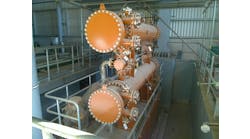Many organizations struggle with a high level of uncertainty when it comes to asset reliability. Whether equipment will be available when it’s needed to meet customer demands may be anyone’s guess. Loss of availability results in increased human and monetary costs and often can jeopardize safety or environmental regulations compliance.
When digging deeper to determine the root causes of unreliability, you’ll often find the MRO storeroom not functioning well, the PM program poorly designed (at best) and without use of effective condition-based approaches, a lack of maintenance planning, and a minimal weekly maintenance schedule. Add to that limited partnerships with other stakeholders, such as production teams, which often don’t make the equipment available for maintenance. Production personnel often lack standardized work practices themselves and induce failures while operating the equipment.
To establish a solid foundation for reliability, the organization must first address the basics. There are eight steps to accomplish this, presented here in no particular order.
Read the rest of the article from our sister publication Plant Services.
[callToAction ]

